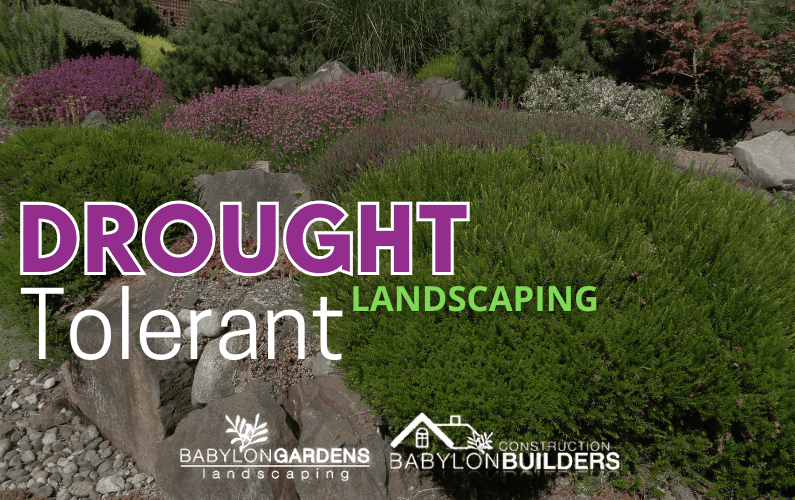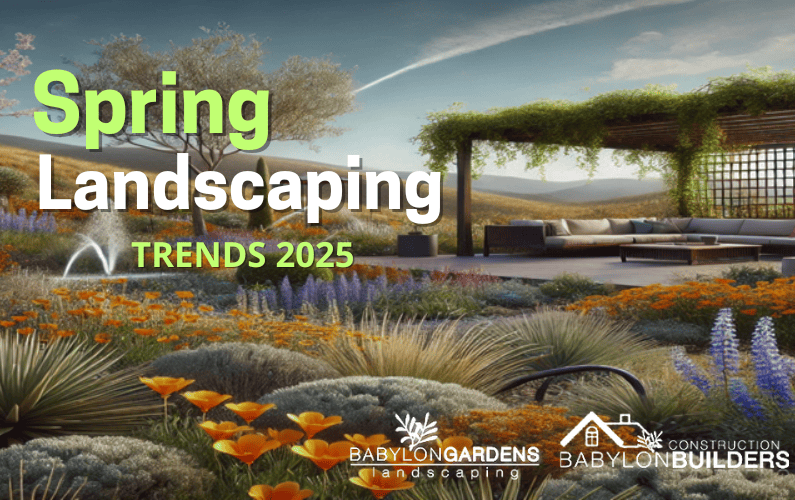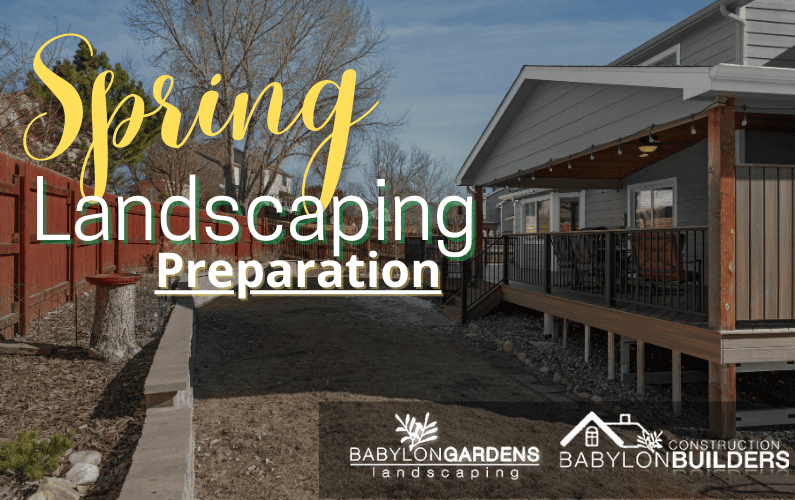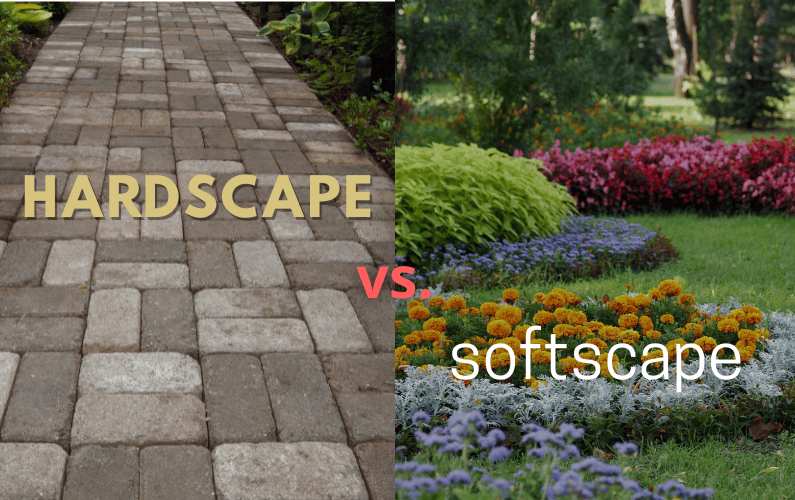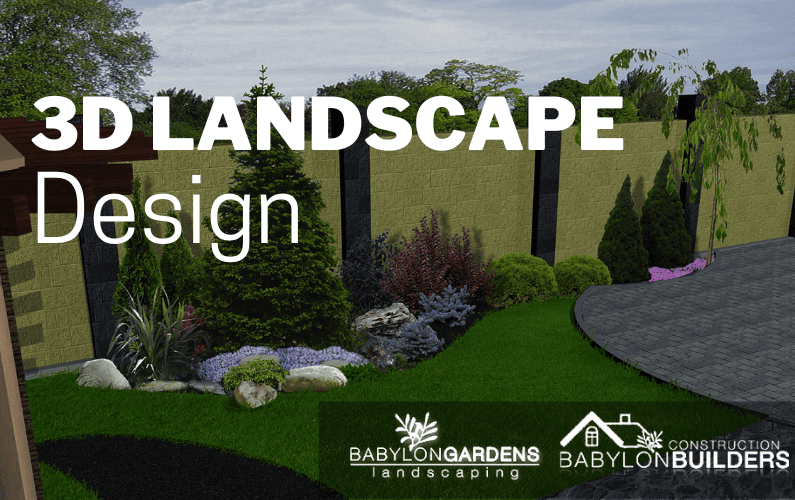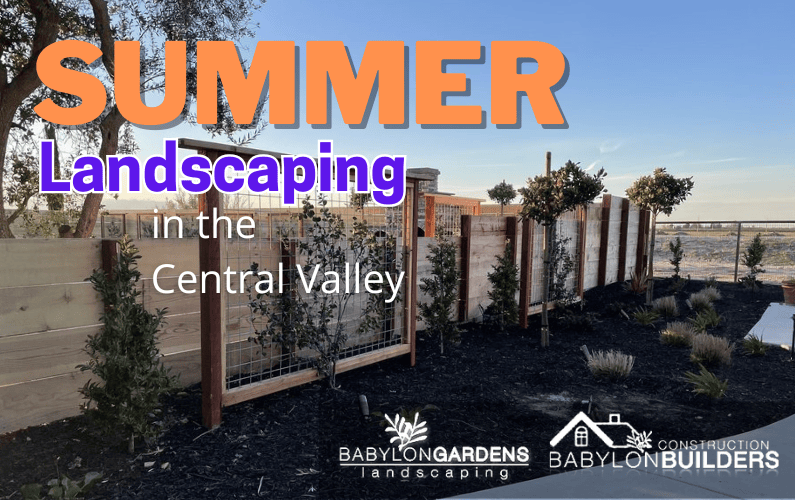
Summer Landscaping in California’s Central Valley
Tips from the Team at Babylon Builders
Summer in California’s Central Valley means long, sunny days and soaring temperatures. But with the right landscaping strategies, your yard can stay beautiful, functional, and sustainable all season long.
At Babylon Builders, we design outdoor spaces that thrive in our unique climate—balancing beauty, comfort, and smart water use. Whether you’re planning a full backyard makeover or simple seasonal updates, here are our top summer landscaping tips.
🌿 Choose Heat-Tolerant, Water-Wise Plants
Not all plants are cut out for Central Valley summers. We recommend drought-tolerant varieties like:
- Lavender
- Salvia
- Penstemon
- California poppies
- Succulents and ornamental grasses
These plants offer lasting color and texture, while standing up to intense heat and limited water.
🌱 Mulch to Conserve Water and Protect Roots
A fresh layer of mulch is one of the easiest ways to:
- Retain soil moisture
- Reduce weed growth
- Keep roots cool in the summer heat
We recommend organic mulches like bark or wood chips, which also enrich your soil over time.
💧 Irrigate Efficiently
Smart irrigation is key in a water-conscious region. We design custom drip systems that target root zones and minimize waste.
Watering Tips:
- Run systems early in the morning or evening
- Water deeply, but less frequently
- Adjust your timer settings as the season progresses
🌳 Add Shade with Purpose
Shade keeps outdoor spaces usable during peak summer. We incorporate:
- Pergolas and patio covers
- Trellises with climbing vines
- Shade trees like Chinese pistache or desert willow
These features bring comfort, style, and long-term value to your home.
🍃 Rethink the Lawn
Traditional grass lawns demand heavy watering and maintenance. Instead, consider:
- Low-water ground covers like kurapia or creeping thyme
- Artificial turf for select areas
- Native plantings with stone or gravel accents
We help clients reduce lawn space and design modern, sustainable landscapes that are easier to care for.
🔥 Embrace Outdoor Living
Make the most of long summer evenings by investing in your outdoor living space. Popular features include:
- Custom patios and seating areas
- Outdoor kitchens and BBQ zones
- Fire pits and landscape lighting
Let us design a space that suits your lifestyle and enhances your home’s livability.
🛠 Seasonal Maintenance Matters
Regular upkeep keeps your yard looking fresh and functioning properly. We offer maintenance support that includes:
- Pruning and clean-up
- Irrigation system checks
- Mulch and plant health inspections
Your landscape should thrive—not just survive—through the hottest months.
Ready to Transform Your Outdoor Space?
At Babylon Builders, we bring craftsmanship, regional knowledge, and creative design to every project. If you’re ready to create a summer landscape that’s both beautiful and built to last, we’d love to hear from you.
👉 Contact us today for a complimentary consultation.

